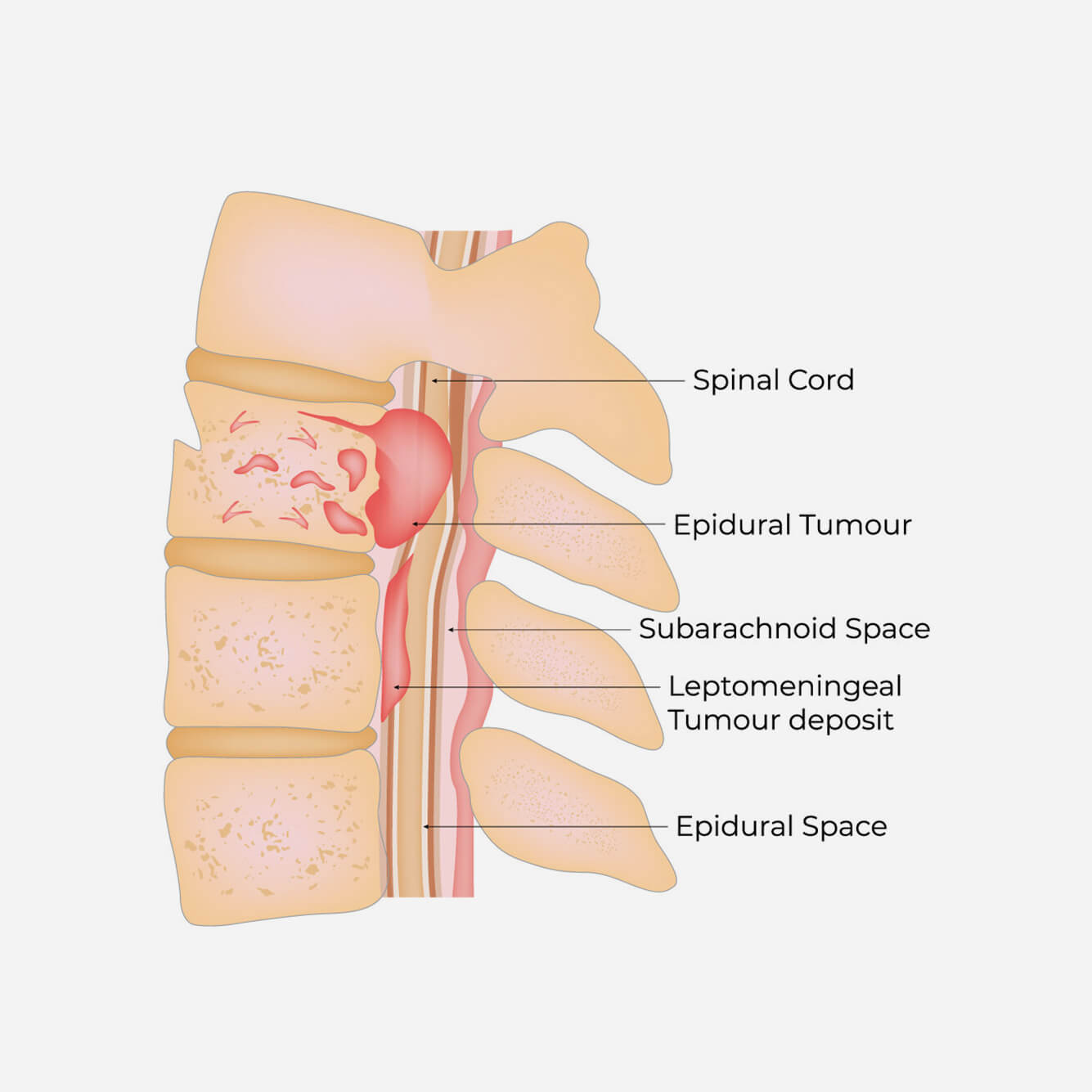

Our ServicesCervical Spine Tumours
The cervical spine, comprising the uppermost part of the spinal column (C1 to C7 vertebrae), plays a crucial role in supporting the head and facilitating a range of movements. Tumours in this region, although rare, can have significant implications due to their proximity to the spinal cord, nerve roots, and blood vessels. This blog aims to shed light on cervical spine tumours - what they are, how they present, and the current approaches to diagnosis and treatment.

What Are Cervical Spine Tumours?
Cervical spine tumours are abnormal growths that develop in or around the spinal column in the neck region. They can originate from:

Vertebrae
(primary bone tumours)

Spinal cord or nerve roots

Surrounding soft tissues

Or they may metastasize from cancers elsewhere in the body (secondary or metastatic tumours)
Tumours may be benign (non-cancerous) or malignant (cancerous). Both types can cause significant symptoms due to compression of nearby structures.
When conservative  care needs
care needs
a specialist’s touch.
touch.
Types of
Cervical Spine Tumours
01.
Primary Tumours
- Meningiomas: Arise from the meninges, usually benign.
- Schwannomas and Neurofibromas: Nerve sheath tumours, often benign.
- Ependymomas and Astrocytomas: Develop from glial cells in the spinal cord.
Signs and SymptomsDue to the critical structures in the cervical spine, even small tumours can produce significant symptoms, such as:
Neck pain that persists or worsens at night
Radiating pain to the shoulders, arms, or hands
Numbness or tingling in limbs
Muscle weakness
Difficulty with coordination or walking
Loss of bladder or bowel control (in severe cases)
Early recognition is key to preventing irreversible neurological damage.
DiagnosisDiagnosing cervical spine tumours involves a combination of:
Neurological examination
MRI scan: Most effective in detecting spinal cord and soft tissue abnormalities
CT scan or X-rays: Help assess bone involvement
Biopsy: To confirm the nature of the tumour
PET scan or whole-body scans: If metastasis is suspected

Treatment Options
Treatment depends on the type, location, size, and whether the tumour is benign or malignant:
- Surgical Removal:
- Often necessary for decompression of the spinal cord or if the tumour is resectable.
- Radiation Therapy
- Used for tumours that are sensitive to radiation or to reduce recurrence post-surgery.
- Chemotherapy
- Typically for malignant or metastatic tumours, depending on the primary cancer.
- Steroid Therapy
- To reduce swelling and inflammation around the tumour.
- Rehabilitation
- Post-treatment physical therapy to restore strength and function.
Prognosis
The outlook varies widely:
- Benign tumours, if completely removed, have excellent prognosis.
- Malignant or metastatic tumours often require long-term management.
- Early intervention improves the chances of preserving neurological function and quality of life.
Conclusion
Cervical spine tumours, though rare, require prompt and accurate diagnosis due to the risk of spinal cord compression and neurological damage. Awareness of symptoms and advances in imaging and surgical techniques have significantly improved outcomes for patients. If you or someone you know experiences persistent neck pain or neurological symptoms, consult a spine specialist or neurosurgeon without delay.

